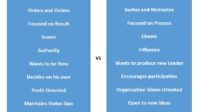Working from a distance has opened up new opportunities, but it also challenges many of the conventions we take for granted. Remote work affects not only how we do our jobs themselves, but begins to affect every aspect of life—from self-worth and stress levels to communication methods.

And remote work is changing even what defines productivity in modern society—it’s no longer all about hours logged at your desk or face time with others in meetings; now you’re judged by results rather than presence.
It has been found that around 53% of respondents in the USA expect to continue working from home at least part-time. This is due, in many ways, to how much more convenient it can be for employees and employers alike when the workplace is not confined to a traditional office space.
Moreover, the use of mobile devices such as iPhones or tablets allows WFH workers greater flexibility with their work schedules – they are able to start later than if they were commuting every day on an unreliable train service; alternatively, they may choose not to go to work until noon because there was no need for them earlier!
Future work will undoubtedly involve remote, co-located, dispersed, and transnational workforces which remain connected thanks to digital technologies.
However, what is truly remote work, and what are the benefits and drawbacks of long-term remote employment?
We’ll cover all of this and more in our guide to remote work. primaverareader’s guide to remote working will also include recommendations on how to successfully switch to remote work if you’re just getting started — as well as strategies to maximize your WFH experience.
However, let us begin with the fundamentals.
What does “remote work” entail?
Remote work is a term that refers to a professional setting in which workers can work from their homes or from any other location other than their company’s physical office. Oftentimes, this entails setting up an office in one’s house.
For professionals who enjoy the benefits of remote work, this can be a rewarding experience. It offers better employment opportunities for people with disabilities or those who have caregiving responsibilities outside of their profession and allows them to choose where they live.
For entrepreneurs, it provides more flexibility in pursuing projects that require less time spent away from home.
Remote work also has its drawbacks such as difficulties staying connected to what’s happening at the company office if communication is limited by technology or lack thereof, increased isolation from coworkers (especially if there are not any nearby), and reduced access to amenities like on-site cafeteria food or paid vacation days due to concerns over paying bills while out of town
However, remote employment may expand beyond the bounds of your home.
Remote work is becoming a popular choice for “digital nomads” who travel and live full-time. These people usually work from places like hotels, beach clubs, coffee shops, or airport lounges rather than their own home office.
Previously, remote work in this manner would have been difficult- mostly due to technological and resource restrictions. With collaboration technologies like Slack, Zoom, and Wrike now available that can help close the divide technologically between employees who are remote or on the move, more employees are able to work remotely with far less difficulty than before.
Thus, what types of occupations are available for remote work?
Remote working is a viable alternative for firms in a wide variety of sectors.
There are many jobs and tasks that can be completed remotely, such as those that need the majority of work to be performed online or on a nearby device.
Many people take advantage of the opportunity to work remotely, as it can offer many benefits: an increased ability for workers to be more focused and productive in their work; less pressure on a worker’s time (e.g., no long commutes); and cheaper living costs when remote-working overseas or near large urban centers like New York City.
Jobs requiring mostly physical presence in person (e.g., sales clerk, postal worker, emergency room physician) are not often conducive to remote work.
However, certain companies may encounter additional difficulties while implementing remote work. Businesses that handle client data may be required to take extensive precautions to avoid data breaches and to remain compliant with legislation such as GDPR.
Certain employment can also be restructured to accommodate a remote work arrangement. For instance, the majority of human resource professionals are accustomed to doing their jobs in person.
However, due to the rapid adoption of broad virtual interviews and onboarding, this business is now able to acquire remote talent while also working remotely.
When it comes to the greatest work from home and remote jobs, Flexjobs has listed the five most popular remote worker roles as follows:
- Accountant .
- Engineer .
- Programmer.
- Educator/Tutor/Instructor .
- Writer.
What does the term “completely distant” mean?
A fully remote individual, team, or business is one that does not have a centralized office location. For instance, a team may have a “completely remote” member who works entirely from a distant location while the rest of the team works from an office.
Modern technology makes it possible for skilled remote workers to connect with their team, clients, and customers from anywhere in the world.
With a good internet connection and a laptop or computer, people can work remotely from home, in coffee shops, or co-working spaces like WeWork.
Remote jobs are becoming increasingly popular as more companies recognize that talented employees don’t need an office to be productive – they just need access to fast Wi-Fi!
On the other hand, a whole team or organization may be entirely remote, with no employees reporting to an in-person office location.
The cost savings from completely remote personnel and businesses are likely the most persuasive justification for this type of entity.
For example, says Forbes, American Express saved $15 million in real estate expenditures by introducing a flexible work program that allowed workers to specify whether they wished to work in a “hub” (office), a “club” (occasional office), their own home (“work from home”), or while traveling.
While American Express is a large corporation, reducing overhead expenses is unquestionably the best condition for startups and small businesses with a business strategy that lends itself to remote-first recruiting.
Remote teams benefit from diversity and a larger talent pool. Employees situated in large, costly locations might find it prohibitively expensive to relocate for various reasons. Employment at remote jobs can help overcome some of these restrictions by offering opportunities that are not geographically constrained.
On the other side of this coin, completely remote employees may sometimes be faced with loneliness or burnout.
Additionally, teams that are fully remote could find it more important to create a healthy culture for their workplace in order to avoid problems like being too distant from one another and forgetting about what goes on at work when you’re home.
What does the term “hybrid work” imply?
A hybrid remote work environment blends the structure of a regular office with the mobility of working remotely. Employees in this type of workplace can be based out of home for some days and still have contact with their physical offices when necessary. However, you may be wondering- “Why would anyone want to do this?”
Output: A hybrid remote work environment blends the benefits that come from both having a permanent job as well as being able to work remotely on occasion.
You’ll get more privacy while also maintaining your full weekly workload by alternating between working at an office and completing your tasks from home every so often? Sounds good, right?
From the onset of COVID-19, many global workers were forced to work from home. This was due to both quarantine regulations and a need for fast-paced information transfer as new symptoms arose or old ones worsened. The feverish race against time relied on their continued productivity in order to save humankind from extinction.
The Brookings Institution states that almost 23 million American working parents lack access to a caretaker for their children. When daycare is not an option, these working parents might benefit from improved workplace flexibility.
In a hybrid workspace environment, workers have to balance their obligations at home with the reality of socially remote workplaces, staggered work hours and enhanced hygiene measures.
One of the economic benefits of a blended work environment is that it can lead to less demand for desk space and reduced need for pricey, vast workspaces (and rents that come with them).
Statistics on remote work 2020 — hybrid work and the contemporary office’s future:
In 2021, up to 30% of the workforce will work from home more than one day each week. According to JLL, office lease volume in the United States decreased by 53.4 percent in Q2 2020.
What is a remote worker, and how are they employed?
Some people work remotely by operating from coffee shops or co-working facilities. Others do so while they are at home. Some of them even work on the road and when they travel.
Working remotely is not essential for efficiency, but a defined workplace is encouraged. What matters more than an ergonomic desk chair, dual monitors and high-definition camera are your attitudes towards remote work.
For some, the shift may be easy. For others, it will take time to develop and optimize new working habits as well as acclimate to life outside of busy office space.
Why is the impression of remote work changing? People’s views on working remotely have shifted dramatically in a relatively short period of output. This change has been partly influenced by advancements in technology and advancements that enable people to work from any location.
Employers can now see the benefits of flexible and remote work, which was previously seen as a bonus. 80% of respondents would choose an offer that offered flexible hours over one that did not.
The shift in attitudes toward remote work might also be due to a generational divide among workers. Millennial and Gen Z employees have a different perspective on remote work than their elders do.
Three-fourths of Millennial and Gen Z managers say that members of their teamwork from home a considerable portion of the time. Additionally, a sizable proportion expresses a desire to continue working remotely following an epidemic.
One of the great changes in corporations over the past few years is how they view employees working remotely.
Historically, many organizations had a strict “no work from home” policy. But when an epidemic made it impossible for people to come to work, many companies were forced to reconsider their policies and implement remote work-from-home programs for the first time ever.
The modern workplace takes into consideration the reality of events going on both locally and globally, while also changing views on wellness and work.
One good thing is remote work; it’s a step forward for how we view an employee in their needs, with all that goes around them.
What information does an employer need to know about remote work?
To start, businesses need to recognize the benefits of remote and flexible employment. Remote work allows people to avoid long or inconvenient commutes and reduce office distractions.
It also broadens the talent pool to include new and working parents, people with impairments, or employees who live outside high-cost urban areas.
American Express has seen considerable real estate cost savings as a result of implementing its flexible BlueWork program.
Employers should appreciate that remote workers demand effective methods of communication, collaboration, and management in order to successfully work on the job every day. Asana, Wrike is one such tool for managing your work remotely.
Online software management solutions are the ideal remote work support system that enables you to manage your responsibilities even when you’re not physically present at the office.
This is because it has task visibility, connection with hundreds of applications, team dashboards, and well-defined custom workflows.
Working remotely also means maintaining company culture, which can be done with perks like personalized company swag or office visits.
It’s also important to understand how employees feel connected, appreciated, and included at work-that their needs are fulfilled through programs that keep them happy.


